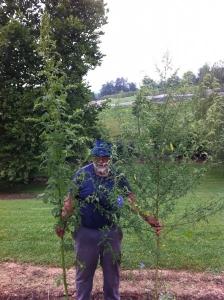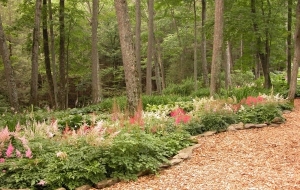
There were reasons for my defeat. Moisture was abundant for the entire growing season and the weeds loved it. Many shared my fate. Other projects kept me from the gardens for a few too many days. Playing catch up this year was impossible. Finally in the spring of 2012 I bought a trailer load of mushroom soil. Most was it was spread with good results immediately. A small pile remained which I weeded regularly. I guess I tired near the end of the 2012 season and a few weeds grew. Part of that pile was spread this year with a resulting carpet of weeds thicker than the hair on a dog. I’m reinvigorated now.
As indicated by the last paragraph a major part of next year’s weed problem is the weed seeds we let mature in our garden now. Surveying the size and maturity of many of my weeds now, I am pulling and hauling them out of the garden. New seedlings will taste roundup. I’ll confess the sprayer and weed eater frequently joined the hoe and my pulling hands this year in the garden.
Recently I saw the claim that a single pigweed can throw off 100,000 seeds. Since it was the villain in my mushroom soil I would suggest that that number is way too low. I do not have numbers for other weeds but I am sure they are quite high also. Their survival, as they fight us gardeners, depends on high seed production and longevity in the soil to offset our efforts to get rid of them.Weeds like every living thing have special niches to promote survival.
As you know not all weeds germinate at the same time. Pigweed is a spring weed. Another plague in my garden is redroot a summer germinator. Finally my third big problem is chickweed which is about to germinate and flourish over the winter and clog our gardens as spring arrives.
Unfortunately the battle against weeds is almost year round.The report on pigweed suggested that just 25% of the seeds would germinate the following year. The rest hangs around to haunt us in future years.
Can there be a better reason to get out there now and begin the 2014 war?
 It sure seems like we’ve had a lot of rain lately. The weather service assures us that we are still at or slightly below normal levels for this time of year, but I for one, am starting to feel like Mrs. Noah.
It sure seems like we’ve had a lot of rain lately. The weather service assures us that we are still at or slightly below normal levels for this time of year, but I for one, am starting to feel like Mrs. Noah.